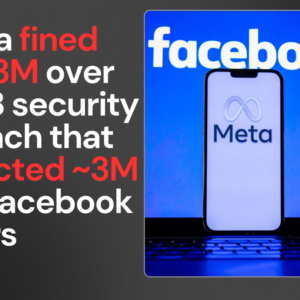YouTube Reveals Best Practices for Creating Shorts from Long Videos
Ever found yourself with a 20-minute YouTube video that contains a perfect 30-second moment that could go viral as a Short? You’re not alone. As of 2025, YouTube Shorts has become one of the platform’s most powerful growth tools, with over 70 billion daily views. But transforming long-form content into bite-sized Shorts isn’t as simple as just cutting a clip—there’s both art and science behind it.
Recently, YouTube released comprehensive guidelines to help creators maximize their Shorts strategy, particularly when repurposing existing long-form content. Let’s dive into these official best practices that can help you transform your lengthy videos into attention-grabbing YouTube Shorts that actually perform.
Why Create Shorts from Your Long Videos?
Before diving into the how-to, let’s understand why this matters. Creating Shorts from existing content lets you:
- Reach new audiences who prefer short-form content
- Maximize your content investment by repurposing what you’ve already created
- Drive viewers to your longer content (YouTube reports that channels posting both Shorts and long videos see better overall growth)
- Test concepts in a low-risk format before developing full videos
YouTube’s Official Best Practices for Creating Shorts from Long Videos
1. Focus on Self-Contained Moments
According to YouTube, the most successful Shorts extracted from longer videos contain complete thoughts or ideas that make sense without additional context. Look for segments in your videos that deliver value independently—perhaps a single tip, a stunning visual moment, or a concise explanation that stands on its own.
YouTube’s research indicates that Shorts with a clear beginning, middle, and end—even in just 15-60 seconds—perform significantly better than clips that feel like random excerpts.
2. Prioritize High-Retention Segments
YouTube specifically recommends examining your long video’s audience retention metrics to identify peaks—moments where viewer engagement spikes. These high-engagement segments often make perfect Shorts candidates. Within YouTube Studio, analyze your audience retention graphs to pinpoint these moments where viewers were most captivated.
3. Optimize for Vertical Viewing
One of the most common mistakes creators make when repurposing long videos is failing to reformat for vertical orientation. YouTube emphasizes that Shorts viewed in their native 9:16 vertical format see 40% higher engagement. This means you’ll need to:
- Re-crop your horizontal footage to focus on the central subject
- Zoom in when necessary to ensure visibility on small screens
- Consider adding letterboxing with complementary visual elements if full re-cropping isn’t possible
4. Revise the Edit and Pacing
What works in a 10-minute video rarely works at the same pace in a Short. YouTube recommends aggressive editing to increase the tempo of your Shorts. Cut unnecessary pauses, speed up transitions, and get to the point immediately. The platform’s data shows that Shorts with an average shot length of 2-3 seconds maintain higher viewer retention than those with longer takes.
5. Add New Hook and Call-to-Action
Even when using existing footage, YouTube suggests creating a new opening hook specifically designed for the Shorts audience. The first 3 seconds are crucial—viewers decide whether to continue watching almost instantaneously. Similarly, end with a clear call-to-action directing viewers to your longer content or related Shorts.
6. Enhance with Shorts-Specific Features
YouTube’s guidelines highlight the importance of leveraging Shorts-specific tools to enhance repurposed footage. Adding text overlays, using the green screen effect, incorporating trending sounds, or using voice-over can transform an ordinary clip into a compelling Short. The platform reports that Shorts utilizing at least one native creative tool see 25% higher engagement on average.
Common Mistakes to Avoid When Creating Shorts from Long Videos
1. Simply Trimming Without Restructuring
The most frequent mistake creators make is merely chopping out a segment without restructuring it for the Shorts format. YouTube explicitly warns against this approach, noting that Shorts requiring viewers to watch the full long video to understand the context see 70% higher skip rates. Each Short needs to tell a complete mini-story.
2. Ignoring Audio Quality
According to YouTube, poor audio quality is the number one technical reason viewers abandon Shorts. When extracting from long videos, carefully evaluate if the existing audio works for Shorts. Background music that worked as ambiance in long videos may overpower key dialogue in Shorts. Consider re-balancing audio levels or replacing the soundtrack entirely.
3. Missing Trends and Seasonality
YouTube recommends timing your Shorts to coincide with relevant trends or seasonal interests. Repurposing older content can be particularly effective when aligned with current conversations. The platform notes that Shorts tied to trending topics see up to 300% higher discovery rates in the Shorts feed.
4. Neglecting Shorts-Specific Analytics
Many creators fail to analyze their Shorts performance separately from long videos. YouTube has developed dedicated Shorts analytics that reveal unique insights about this format. Pay special attention to average view duration, relative audience retention (how your retention compares to similar Shorts), and traffic sources specific to the Shorts ecosystem.
Putting It All Together: A Practical Workflow
Based on YouTube’s recommendations, here’s a streamlined workflow for transforming long videos into effective Shorts:
- Review analytics to identify high-retention moments in your long content
- Extract the relevant segment, ensuring it contains a complete thought
- Re-edit for vertical viewing, faster pacing, and Shorts-specific engagement
- Add a custom hook and call-to-action
- Enhance with Shorts creative tools
- Optimize title and description with relevant keywords (while keeping them concise)

The Future of Shorts from Long Videos
As we move through 2025, YouTube continues to evolve its Shorts strategy. The platform recently hinted at upcoming AI-powered tools specifically designed to help creators identify and transform the most promising segments from their long videos into Shorts. By mastering these best practices today, you’ll be well-positioned to leverage these new features when they arrive.
Remember that creating effective Shorts from your existing content isn’t just about growing your Shorts presence—it’s about building a cohesive content ecosystem where each format supports the others. With these YouTube-approved best practices, you’re ready to transform your video library into a source of engaging, high-performing Shorts that capture new audiences and drive overall channel growth.
Have you tried repurposing your long videos into Shorts? What techniques have worked best for your content? Share your experiences in the comments below!













